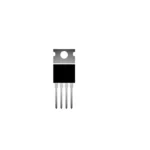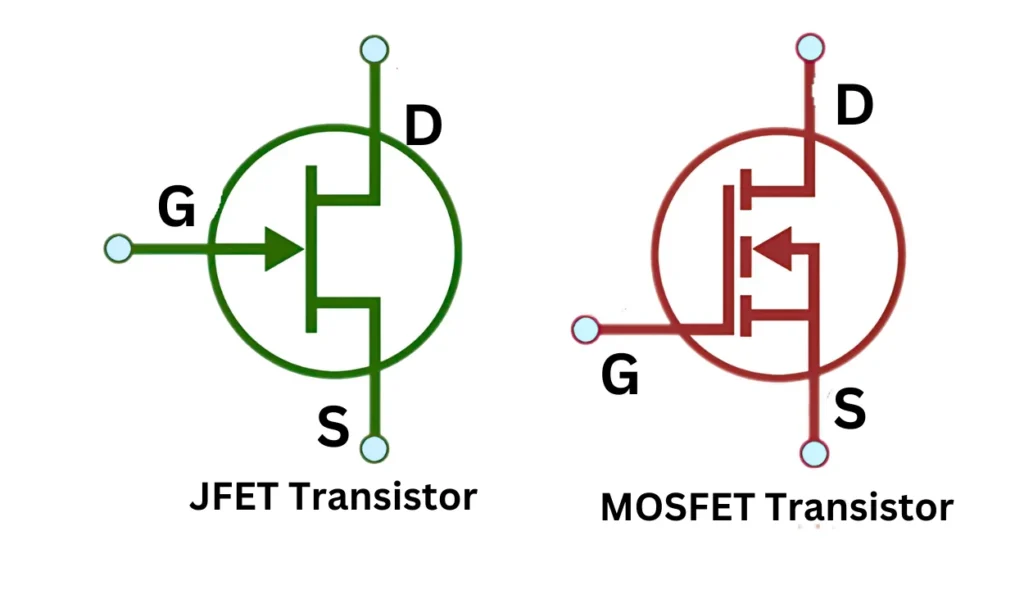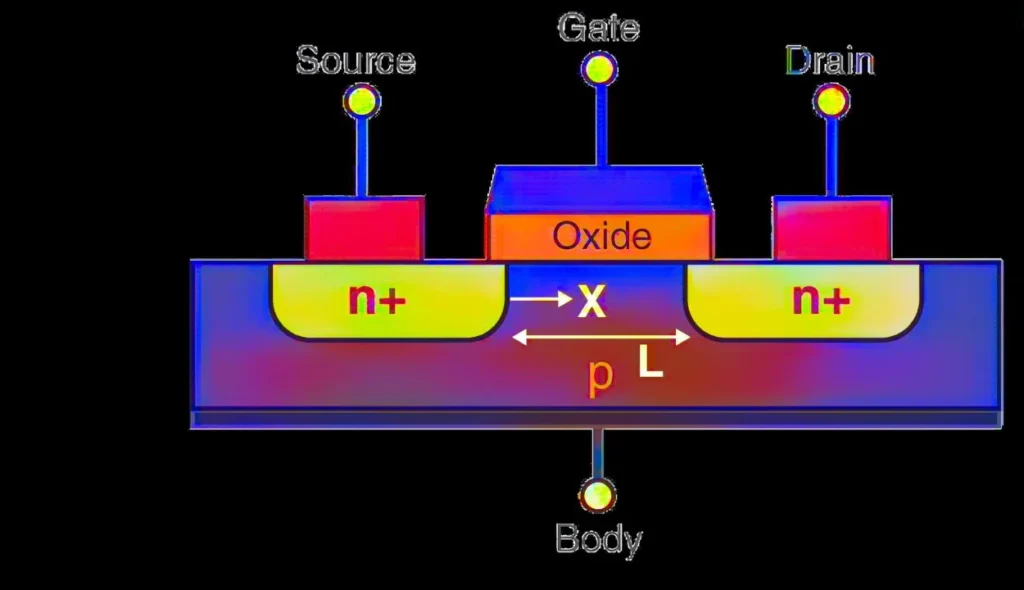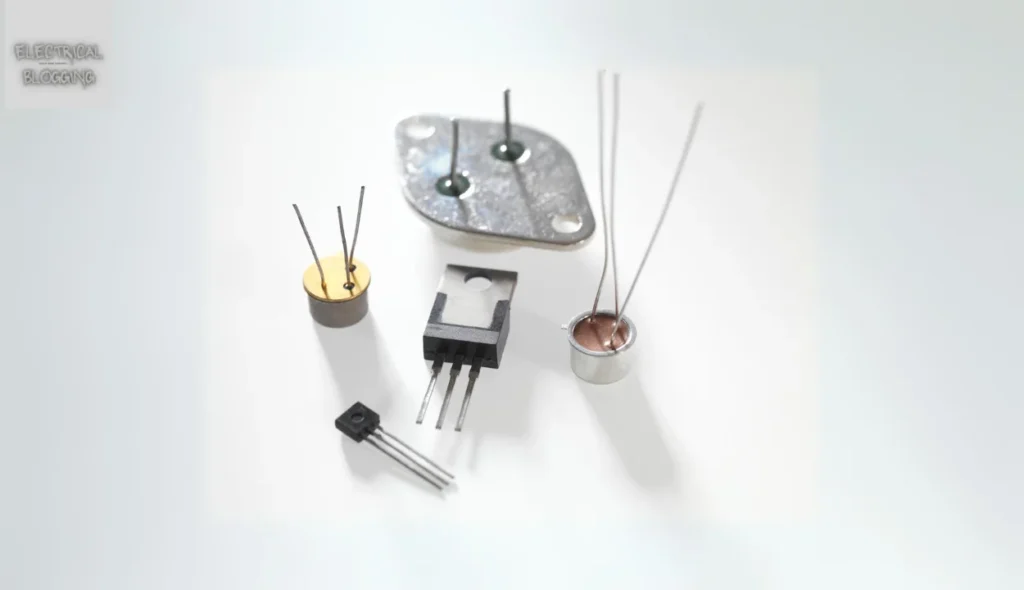Introduction
The history of FETs dates back to early inventions and patents, shaping modern electronics. These electronic components offer advantages like low power consumption, high input impedance, and simple biasing requirements. Engineers delve into their working principles, analyzing key specifications to optimize circuits. Continuous developments allow experts to explore different types and expand their applications in evolving technology.
What is a field-effect transistor (FET)?
A Field Effect Transistor (FET) controls current flow using a gate that regulates the charge carriers in a channel between the source and drain. By applying voltage at the gate, the operation of the FET is modulated, leading to a change in current. The transistor is classified into enhancement and depletion modes, depending on whether the voltage increases or decreases the flow. The electrodes at the terminals establish a connection, with the proximity of the gate playing a crucial role in control. You can also read difference between BJT and FET.
Field-Effect Transistor diagram

Working Principle of Field-Effect Transistor
A Field Effect Transistor controls the flow of current using a gate that regulates charge carriers within a channel. When a voltage is applied, an electric field is created, influencing the conductivity of the channel. In an n-type FET, a negative voltage increases the depletion region, reducing the electrons moving from the source to the drain. Conversely, in a p-type FET, a positive voltage affects holes, changing the operation of the device.
To visualize this, think of water flowing through a pipe into a vessel, where a tap controls the flow. Here, the gate acts like the tap, modulating how much current passes through the channel. By controlling the voltage, the effect on the terminal and electrode varies, influencing the number of carriers. This process reduces or increases conductivity, ensuring precise control of electrical signals in circuits. You can also read types of 5477 Transistors.
History of the FET Transistor
The history of the field-effect transistor began in 1926 when Oskar Heil and Julius Edgar Lilienfeld filed a patent for early designs. Their device faced technical challenges, including limitations in metal-semiconductor contact and substrate stability. Despite these issues, their work laid the foundation for further developments in semiconductor technology. In 1934, Heil introduced another concept, but it lacked practical success.
The real breakthrough came in 1947 when Shockley, along with Bardeen and Walter Brattain, developed a working junction gate transistor at Bell Labs. Their team improved control over the junction, making the device more efficient and suitable for real-world applications. By refining the metal oxide process, they enhanced practicality, allowing for the rise of modern electronics. Their discovery was a significant milestone in technology.
In 1956, the trio was awarded the Nobel Prize in Physics for their contributions to transistor innovation. The 20th and 21st centuries saw rapid developments, making FETs essential components in various high-voltage applications. Their impact on electronics is still recognized today, proving how early ideas evolved into one of the most important inventions in technology’s history.
Essential information concerning FETs
A Field-Effect Transistor (FET) is a semiconductor device that controls current using an active channel between the source and drain. The gate influences the potential, affecting the conductivity of the material. Electrons or minority carriers move through the ohmic contacts, allowing the flow of charge. FETs are classified as majority or minority carrier devices, depending on how charge is carried. The function of the terminals and conductors determines how efficiently the device operates.
Terminals
A Field-Effect Transistor (FET) has three terminals: the source (S), the drain (D), and the gate (G). The source allows current to enter the device, while the drain is where it leaves. The voltage (VDS) between these terminals influences the channel and its conductivity.
The gate plays a key role by modulating the passage of electrons, either allowing or blocking their flow. By applying a voltage, the ID can be controlled, similar to how real-life gates open and close to permit or restrict movement. These functions determine how efficiently the FET operates.
Key Characteristics of Field-Effect Transistors
Field-Effect Transistors (FETs) are voltage-controlled devices with high input impedance, meaning they do not affect the signal in a circuit. This makes them ideal for buffer amplifiers, which help reduce distortion and improve output quality.
Unlike BJTs (Bipolar Junction Transistors), which use both electrons and holes, FETs are unipolar and rely on a single charge carrier to control the current flow. This makes them more efficient and suitable for battery-powered devices.
FETs are also power-efficient, meaning they consume less power while providing high current gain. They are widely used in amplification applications as an alternative to BJTs when lower power consumption is needed.
Types of FETs
- Junction Field Effect Transistor (JFET)
- Metal-Oxide Semiconductor Field-Effect Transistor
Junction Field Effect Transistor (JFET)
A Junction Field Effect Transistor (JFET) is a voltage-controlled three-terminal device that controls current flow using an electric field. It has a source, drain, and gate, which adjust the channel width by modifying the depletion region. Unlike a BJT, a JFET does not require biasing current to operate. Instead, the gate controls the voltage, influencing how the transistor functions. This makes JFETs ideal for use in switches, resistors, and other semiconductor devices.
JFET Terminals
In a Junction Field Effect Transistor (JFET), there are three key terminals: the source, drain, and gate. The source terminal is where the current enters, while the drain terminal is where the current exits. The gate-to-source voltage controls the flow of current by altering the width of the depletion region in the channel, which in turn impacts the conductivity of the channel.
When the gate-to-source voltage is at zero, the channel offers low resistance, and the current flows easily between the source and drain. If the voltage increases, the depletion region increases in size, decreasing the effective channel width and making the device more resistive. In the pinch-off condition, the JFET reaches saturation, and the current flow becomes limited.
Metal-Oxide Semiconductor Field-Effect Transistor (MOSFET)
A MOSFET is a field-effect transistor that can switch or amplify electronic signals efficiently. It has an insulated gate that controls the conductivity based on the voltage applied. This makes it useful for switching operations and adjusting levels in circuits.
There are two types: enhancement mode and depletion mode, each working differently. In enhancement mode, the exerted voltage at the gate increases conductivity, while in depletion mode, it decreases it. This allows MOSFETs to regulate current more efficiently than bipolar transistors (BJTs), making them essential in modern electronics.
JFET and MOSFET symbol

Applications of Field-Effect Transistors
FETs are widely used in low-frequency amplifiers due to their ability to minimize intermodulation distortion in circuits.
They serve as key components in voltage-controlled devices, acting as resistors in operational amplifiers.
Because of their high input impedance, FETs are used in oscilloscopes, voltmeters, and other measuring tools.
In radio and FM applications, FETs help construct mixers for receivers and TV tuners.
Their small size makes them ideal for LSI (large-scale integration) and computer memory modules.
FETs are used in electrical coupling circuits and improve signal processing in capacitors and amplifiers.
They play a critical role in controlling the channel flow in various device applications.
Advantages of Field-Effect Transistors
FETs have high impedance, which makes them excellent buffers in signal processing and preamplifiers. They allow signals to pass without affecting the source, maintaining signal quality.
They produce low noise, making them ideal for mixers and other low-power applications where clean signals are necessary.
Due to their fast switching speed, FETs are widely used in digital circuits, improving performance in high-frequency applications.
Their low power consumption makes them perfect for battery-powered devices, allowing for efficient use in a wide range of applications.
FETs offer high-voltage handling capability, making them suitable for high-voltage circuits, power amplifiers, and switching applications.
They provide excellent temperature stability, ensuring reliable performance in different environments without major fluctuations.
Limitations of Field-Effect Transistors
Field-Effect Transistors are highly sensitive to static electricity, which can cause damage during handling and assembly, making them fragile under certain conditions.
They have high-input capacitance, which limits the bandwidth and performance in high-frequency amplifiers and circuits that require fast response times.
Compared to bipolar transistors, FETs offer low current gain, making them less effective in applications where a weak signal needs strong amplification.
Temperature changes can impact stability. This is important in high-power applications like power supplies, where dissipation becomes a concern.
FETs have limited power-handling capability, restricting their use in high-power applications that demand large amounts of current flow.
Some FETs have a limited frequency range, making them unsuitable for certain high-frequency operations where precision is required.
Conclusion
The Field-Effect Transistor (FET) is a crucial component in modern electronics due to its high input impedance, low power consumption, and fast switching speed. It is widely used in amplifiers, digital circuits, radio frequency applications, and battery-powered devices.
FETs have some downsides. They are sensitive to static electricity. Their gain is lower than that of bipolar transistors. Plus, they can handle less power. Even with these drawbacks, they are vital for many applications.
FETs, like JFETs and MOSFETs, are key in signal processing. They are crucial for switching and high-voltage circuits. This makes them essential in both analog and digital electronics.



